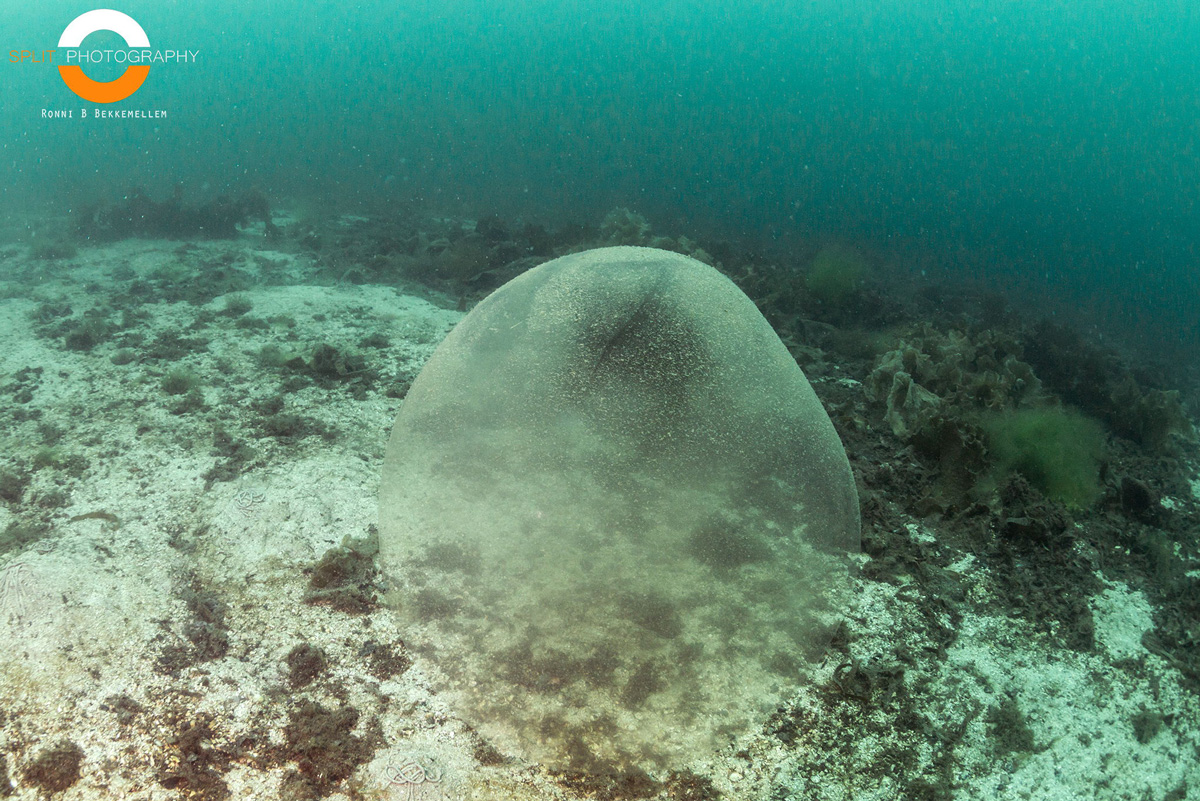Huge Jelly Blobs Spotted Off Norway Coast: What Are They?

Giant, jelly-like blobs have been sighted off the western coast of Norway, but the identities of these mysterious objects have scientists stumped.
The blobs are about 3.3 feet (1 meter) in diameter and are translucent, except for a strange dark streak running through their center, Science Nordic reported. No one knows what they are, or what made them.
"This is a mystery, actually," said Michael Vecchione, an invertebrate zoologist at the Smithsonian Institution who has been corresponding with Norwegian researchers about the blobs. "It could be an egg mass, or something completely different, but we just don't know at this point until we get some more detailed observations." [13 Bizarre Things That Washed Up on Beaches]
Egg mass, or something else?
Vecchione has helped identify weird ocean blobs before. In 2015, for example, divers discovered a glittering blob off the coast of Turkey in the Mediterranean Sea and uploaded a video online. That one, Vecchione said, was a squid egg mass, probably from a red flying squid (Ommastrephes bartramii).
The new Norwegian blobs could be squid egg masses, too, Vecchione told Live Science, but their appearance is different from any squid egg sac that has been identified before now. Vecchione said that the only similar one he has ever seen was from a photograph, many years ago, taken near Alaska.
"The reason it's different is because of the dark streak that goes through the center of it," Vecchione said. The dark streak could be squid ink, he said, and there are certainly many species of squid whose egg sacs scientists have never identified or seen. But no one will know for sure whether squid made the jelly balls until someone does a DNA test.
That's one reason why the mystery blobs are in the news, in fact. Marine biologist Gro I. van der Meeren of the Institute of Marine Research in Bergen, Norway, and colleagues are trying to get divers to grab a chunk of one of the jelly balls to send to them for genetic testing. Once the researchers have a DNA sequence, they'll be able to compare them to catalogues of known DNA "barcodes," or short DNA segments that identify and differentiate species, Vecchione said.
Sign up for the Live Science daily newsletter now
Get the world’s most fascinating discoveries delivered straight to your inbox.
Doing the detective work
But, getting a sample might not be easy. Gelatinous egg masses are very light, and they're hard to get close to because the slightest ripple in the water pushes them away, Vecchione said. A diver trying to get a sample might have the best luck with a "slurper" tool that uses a vacuum to capture soft underwater objects. The researchers ask that the sample be frozen and that they be contacted to collect the sample.
The shallow areas where divers are sighting these egg masses are near a deep-water drop-off, Vecchione said, so it's possible that the eggs belong to a deep-sea creature. Many deep-living squid, for example, release their egg masses to float on currents closer to the surface. If that's what's happening in this case, Vecchione said, a current may be coincidentally pushing a number of egg sacs in the same direction, which could explain the multiple sightings reported by divers this summer.
"It's an interesting mystery," Vecchione said.
Divers who sight one of these blobs or collect a sample should contact Halldis Ringvold at post@buzzingkid.no or Gro I. van der Meeren at grom@imr.no, according to Science Nordic.
Original article on Live Science.

Stephanie Pappas is a contributing writer for Live Science, covering topics ranging from geoscience to archaeology to the human brain and behavior. She was previously a senior writer for Live Science but is now a freelancer based in Denver, Colorado, and regularly contributes to Scientific American and The Monitor, the monthly magazine of the American Psychological Association. Stephanie received a bachelor's degree in psychology from the University of South Carolina and a graduate certificate in science communication from the University of California, Santa Cruz.









